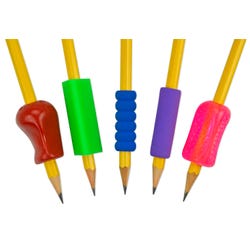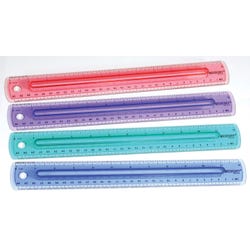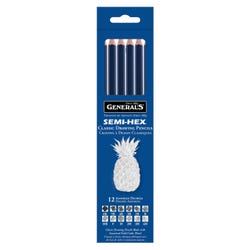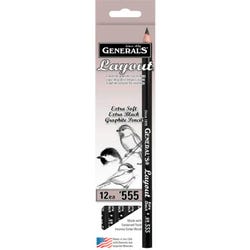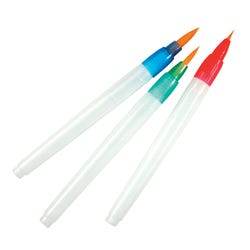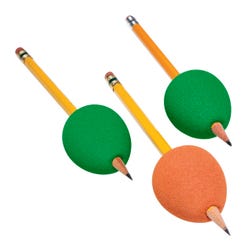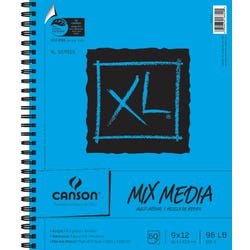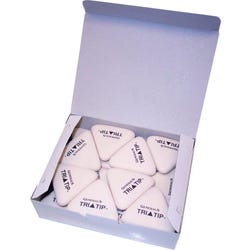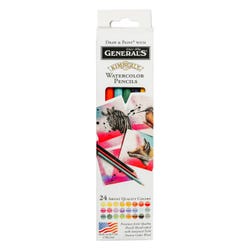My Fortress of Strength

Description
Lesson Plan and Artwork by Sue Loesl
In this lesson, students will draw a “Fortress of Strength” emphasizing various textures such as stone, brick, wood, and metal. These visual surface qualities give the Fortress a sense of permanence. Students with fine motor challenges may find it difficult to grasp traditional drawing and painting tools or draw finely detailed textures to create drawings. The plan provides adaptations for students with physical challenges to more independently use art tools to create their personal “Fortress of Strength”.
Objectives
- Research historic and present images and explore real tactiles of buildings with various textures such as stone, brick, concrete, wood, and metal.
- Identify and draw at least 3 building material textures.
- With support, determine and utilize adaptive supports to complete their artistic “Fortress of Strength”.
Supplies Needed
General’s® Semi-Hex® Classic Graphite Drawing Pencils, Set of 12
General’s® Woodless Coloring Pencils, Set of 12
General’s Kimberly® Watercolor Pencils, Set of 24
General’s® Layout Pencil, Pack of 12
Abilitations® Egg-Ohs!, Set of 3 (Recommended for students with fine motor challenges)
Factis® Tri-Tip & Oval Erasers, Pack of 24
The Pencil Grip Mixed Grips Set, Pack of 5 (Recommended for students with fine motor challenges)
Canson® XL® Mixed Media Pad 98 lb, 9 x 12 in, 60 Sheets
Roylco® Texture Rubbing Plates, Set of 4
Shade-Tex® Architecture Rubbing Plates, Set of 6
The Pencil Grip Mixed Grips Set, Pack of 5
PETA Mini Easi Grip Scissors
Royal® Aqua-Flo Watercolor Brushes, Set of 3
Royal® Big Kid’s Choice™ Brush Set, Round, Set of 6
Westcott® Finger Grip Ruler
Standards
Standard #2: Organize and develop artistic ideas and work.
Standard #6: Convey meaning through the presentation of artistic work.
Standard #8: Interpret intent and meaning in artistic work.
Standard #10: Synthesize and relate knowledge and personal experiences to make art.
Instructions
1
Show examples of old and present buildings that have a variety of textures such as stones, bricks, wood, steel, etc.
2
Bring in examples of textures for students to handle and feel the texture and weight of the various building materials. Discuss how these materials can reflect a strong building.
3
Discuss with students what other structural components a “Fortress” would have, such as windows and doors. How tall and wide can a strong building be? What gives it the appearance of strength?
4
Ask the students, “If you were a Super hero, what would your Fortress of Strength look like”?
5
Draw sketches in 1-point perspective of their “Fortress of Strength” including at least 3 building material textures.
6
Students with fine motor challenges may require extra grips on their pencil to build up the tool for ease in drawing. Put the individual Pencil Grip Mixed Grips onto the General’s Graphic Set Pencils to find the best grip for students.
7
Use a ruler to create the buildings if more structured lines are preferred. Alternatively, a freehand drawing can add texture and character. The Westcott Fingertip Ruler assists students with fine motor challenges to better grip a ruler for straight lines.
8
Choose at least 3 building textures to create the “Fortress of Strength”. Practice drawing the textures for the stones and bricks with General’s Coloring Pencils to see the various texture options that can be used on the buildings.
9
Add EggOhs! Grips to the General’s Coloring Pencils and push the grip to about 2” from the bottom of the pencil. After placing a texture plate taped to the table surface with a piece of paper on top, hold the grip and rub over texture plates with the back end of the coloring pencil.
10
Once the desired textures and building design has been chosen, the paper needs to be prepared.
11
Using Canson 98lb Mix Media paper, tape the paper, just at the corners, to the table. Using the black General’s Kimberly Watercolor Pencils on the side of the lead, demonstrate how to lay down the color on the paper from top to bottom, with space around the color. Take off the tape and turn the paper over onto the table.
12
Using a paint brush with only water, brush the back of the paper top to bottom lightly with water. This will help keep the paper from curling too much. Turn the paper over again with the drawing side up and tape the paper to the work surface.
13
Paint with water lightly over the watercolor pencil lines horizontally across the paper, from top to bottom, to create a wash for the background of the Fortress. Use just enough water to smooth out the watercolor. Students that need an adapted paintbrush can use Aqua-Flow brushes filled with water for a better grip and to make the process of using water in painting easier. If students need a larger grip, they can use the Royal Langnickel Big Kid’s Gripper Paintbrushes.
14
Let dry.
15
Using the Fortress sketches, use the black General’s Kimberly Watercolor Pencil or the General’s Layout Pencil to lightly draw or trace fortress onto the paper. The Westcott Fingertip Ruler and Factis Tri-Tip Eraser can also be used to draw and edit. Watercolor wash will stay on the paper despite erasing, unless it is firmly erased. Students may find after they draw their fortresses that some textures may already be created by the watercolor wash that they can enhance.
16
Once fortresses are drawn, students can add building material textures to walls, windows, doors and other areas. If students are using the texture plates, they can add Egg Ohs! grips to the back ends of the General’s Coloring Pencils for ease in using the rubbing plates. Encourage students to highlight and darken the textures to give them character by using various General’s Semi-Hex Graphite Pencils with assorted degrees of hardness and General’s Layout Pencils, using Pencil Grips as needed - both provide students with a strong variety of options from light to dark for creating the textures.
17
Once the building and textures are complete, students can add ivy, grass, trees, or other embellishments to their fortress with the texture plates, using coloring pencils or watercolor pencils.
18
Have students describe their fortress to the class, with emphasis on the textures chosen to represent their Fortress of Strength.





